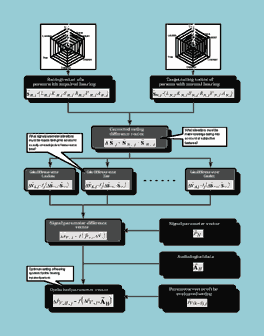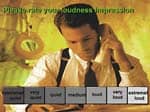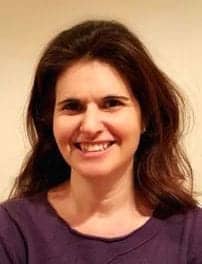The digitization of data, the Internet, and wireless communication will transform the hearing industry. In particular, wireless technology will allow dispensing professionals to test and fit patients free from desks, cables, and wires, and allow a full battery of tests from screening to clinical testing. Additionally, with the advent of Bluetooth-enabled products, new freedoms from hard-wired connections between computers in a practice can be realized.
Over the course of the last 10 years, the hearing care profession has been witness to the most rapid development and application of new technology in its history. The market has advanced from a basic analog world, to a world of digital and computerized products and services, which today constitutes the vast majority of technologies utilized by hearing care professionals. Major advancements in hearing aid technology have been the most evident of the transformations, as more sophisticated and complex signal processing capability has been incorporated into our industry’s most public of products —hearing aids.
But, quietly in the background, significant technological advancements in computerized testing and diagnostic instrumentation have also had a major impact on the fundamental activities that are conducted by hearing care professionals every day to assess and diagnose hearing disabilities. Since the mid-1990s, the application and use of computers in audiological assessment have now become the standard rather than the exception. What has caused this ever-accelerating migration to the computer age, and where is it leading the profession?
Forces Driving the Future of Hearing Care
Clearly the most notable driver of computerized diagnostics has been the rapid deployment of programmable/digital hearing aids from virtually every major hearing aid manufacturer in the world. Software designed for programmability and storage of hearing aid fitting results has driven practitioners towards the utilization of laptop and desktop computers as their primary business “instrument” today. The PC has become a standard business tool for the profession.
Nearly a decade ago, the first fully integrated, modular testing and fitting systems began to appear on the market, linking the fitting software programs of nearly all major hearing aid manufacturers to the hearing aid testing and fitting process. New software-based instrumentation, such as the Aurical™ system, have become alternatives to the conventional stand-alone diagnostic audiometers, real ear measurement systems, and hearing aid test boxes. Some people in the hearing industry contend that dedicated, mechanical diagnostic instruments have limitations in flexibility and integration compared to the software-based technologies. Testing, data collection/analysis, hearing aid fitting, and patient management on separate or manual platforms may impede efficient management of patient populations and business/marketing activities. Additionally, some of the stationary systems can be cumbersome and, in some cases, can be difficult to upgrade or add functional improvements without costly hardware modifications or factory intervention.
There are three key driving forces that are influencing the future of audiology and the emerging concept of telehealth. These forces will dictate and accelerate the development of technical standards for integration into modern audiological settings.
Digitized Information: The first driving force has already occurred: the digitization of information. This capability has drastically altered the very core of the practice of dispensing hearing instruments. From hearing aid programmability and digital signal processing to diagnostics, fitting algorithms, and data management—all are now part of the new digital world. Today, digitized data, photography, video, and voice can be combined, sent, and stored in countless formats. Advancements continue to compress data into smaller “packages,” allowing storage of more and more information in smaller and smaller digital files. Eventually, it is predicted that clinical and patient data will be programmed onto “Smart Cards” that will carry all of the patients’ medical history. Technical standards are in the development stage to help integrate telemedicine clinical data onto these types of records.
Further, the medical industry and many governmental programs in general are demanding paperless documentation and computerized patient management systems to accelerate processing and communication capabilities as the aging patient population grows in number.
Internet: The second driving force involves the expanding use of the Internet. Aside from the capability of the Internet today to find and share information and to allow global 24-hour communication, the Internet of tomorrow will also become an important and expanding tool within the hearing care market that will affect education, training, instrumentation updates, and sales. It’s even possible that alternatives like “black box” applications of diagnostic products, offered on a “per-use” basis by logging onto web sites, will be explored. Most certainly, upgrades and modifications will be handled electronically, reducing the need for disruptive field intervention.
In the early 90s, there were few domain names with IP addresses on the Net. By the end of the decade, the number had risen to some 45 million registrations, and today this number is rising exponentially. There are incredible opportunities today to send and receive medical records and patient data, send and receive diagnostic pictures, images and even movies, to many locations—simultaneously, and in just seconds. It is common today, for example, to send radiological images or video otoscopy images via a desktop computer to a remote site or to a physician for review.

Even patient/clinician interaction will become easy and fast online. Today, the hearing care professions can use technology to obtain training, further their education, and share clinical knowledge and information. For 13 years, Mayo Clinic has been successfully hosting Audiology Videoconferencing via satellite connections to deliver relevant courses to audiologists, otorhinolaryngologists, and others in health care (see Darrell E. Rose’s article on page 72). This type of communication will undoubtedly extend the global reach of voice, data, and many other services. Today, Motorola and Boeing are working hand-in-hand to build an “Internet in the sky” with some 288 satellites to offer broadband Internet access which is affordable and that can accommodate higher speed transmission of data (Figure 1). The goal is to be able to transmit data at speeds 30 times faster than today’s capability! Faster data transmission, smaller digital information packages, “live” Internet broadcasting, conferencing, and interactivity will lead to many more opportunities to apply this technology to the hearing care market.
The biggest challenge facing telehealth today is the ability to have security, reliability, and worldwide availability. The “Abilene Project” is part of the development of “Internet2,” which will be the high-speed platform of the new Internet. This project connects a finite group of businesses and universities which will test the new Net capabilities and advanced security systems as the new system evolves.
Wireless Communication: Concurrently, there is now a migration to wireless communication—the third driving force in computerization of the hearing care industry. Why is this driving force important to the hearing care market, and what potential does it have? Wireless transmission technology is by far the most interesting and novel movement afoot, and it will have a remarkable impact on how audiology is performed within the clinical setting by the practitioner

Imagine having the ability to be able to freely move the patient around, free from desks, cables, and wires, and still be able to conduct a full battery of tests from screening to clinical testing. Devices that speak to and share information with a PC without landlines will be available in the foreseeable future (Figure 2). This capability has inherent mobility and flexibility advantages to the hearing care professional. Clinicians could place the patient anywhere that they are comfortable to conduct tests—this is especially important for patients that are not ambulatory or who have difficulty moving about. Patients can then receive the full attention of the tester during the collection of data. Testing instruments will move from room to room with ease, sharing data instantaneously with data collection and patient management software or networks. Clinical efficiency can be vastly improved with this new generation of instrumentation, allowing more patients to go through diagnostic procedures in a shorter timeframe, without compromising standards of care, quality of data integrity, or patient focus.
Today, wireless communication in the telehealth industry is commonly used for hospital telemetry systems and some emergency medical services. In some parts of the world, adaptation to wireless technology has surpassed the US, and global markets are expected to evolve rapidly over the next year. For some time now in Japan, Internet email access via cell phone and mobile videophone technologies have been in use. This capability is just becoming available on a widespread basis in North America.
Currently, the WAP (Wireless Application Protocol) standard is under rapid development. WAP will allow access to data over the Internet or from other data containers to be displayed on handheld devices. Right now, mobile systems lack the capacity to support high-speed connections to the Internet, but this obstacle will be overcome, opening a new world of communication within and outside office and clinic walls.
One of the main challenges facing the medical industry will be the security and protection of patient information, as well as compliance to HIPAA regulations. But this too is under intense investigation and the problem will ultimately be solved.
Why Will Wireless Set the Standard?
There are many reasons why wireless communication in audiological settings will become increasingly desirable:
- The large space-consuming test systems of today can be replaced with more flexible, modular solutions, allowing alternative installation locations where applicable (ie, wall mounting or internal desk locations).
- Patient care can be enhanced through the ability to test the patient wherever they are comfortable or where it is convenient.
- Data collection can be seamless and instantaneous, relieving the tester of the burden of data collection and storage administration. In this respect, there are many cost-saving efficiencies to be realized.
- Expansion of business services is easier and more convenient to implement.
And, there are many more advantages which will undoubtedly become more evident as new technology is put into play.
Bluetooth™ – A New Standard of Connectivity?
There continues to be much discussion about Bluetooth wireless technology. What is it and how does it work? The standard definition: Bluetooth technology is a system that enables wireless networking and connectivity. However, this is an very simple, inadequate definition for a technology that employs a wireless multimedia broadband link that is omni-directional and consists of variable bandwidth with a very short range, and also consists of radio-frequencies that are transported so that information can pass through walls, briefcases, pockets, and other barriers.
When two or more Bluetooth devices come into close proximity, they recognize each other, perform authentication and privacy checks, and then automatically network together forming a Personal Area Network or PAN. This makes it not only smarter than, for example, infrared, but also much more secure. And Bluetooth is a standard supported by industry giants like IBM, Microsoft, Nokia, Ericsson, Motorola, Toshiba, Intel and hundreds of Associate member companies. (Author’s Note: For more information on Bluetooth technology, visit the official Bluetooth Web site www.bluetooth.com.)
Bluetooth technology has the potential to solve many of the daily frustrations associated with “connecting” systems and diagnostic tools for the hearing care market. With the availability of Bluetooth-enabled products, new freedoms from hard-wired connections between computers within a practice can be realized. Freedom from desk-bound instruments that limit usage in and out of the clinic can enhance and expand business opportunities, and wireless technology allows cable-free connection to the Internet, allowing practitioners to interface, exchange information and data, and synchronize information anywhere, anytime. Bluetooth has the ability to literally redefine traditional boundaries and barriers within and outside the practice, by providing a low cost, low power connectivity solution to the hearing care market.
Even desktop computers are shedding the connection cables associated with printers, keyboards, and other peripherals, not only shrinking the space needed for PC’s, but allowing flexibility in placement and application. The hearing care industry is already seeing its first Bluetooth application with the introduction of NOAHlink™ from HIMSA, which is eliminating cables between the computer interface and programmable hearing instruments, and it is predicted more will follow. Several industry engineers maintain that moving from today’s in-the-ear chips to a system in which sound is received by the hearing aid, beamed to a processor within a small device clipped to a person’s belt (disguised as a pager or cell phone), then beamed back up to the ear for delivery to a custom earmold may be the next “big leap” in hearing instrument technology.
The Promise of Wireless
As we continue our journey into the new age of communication, our profession will stand to benefit significantly from these new technologies. Our daily procedures and tools will take on a new look and new performance that will improve the standard of patient care offered today, as well as enhance business opportunities for the hearing care professional. The profession will be faced with new ways of testing, opportunities for new, more efficient office layouts, and better data management capability —all designed to enrich patient care and focus.
Commercialization of wireless technologies for the audiological field is just around the corner, and cutting-edge products will soon introduce many of the advanced wireless and mobile capabilities discussed above. Preparation, adaptation, and education challenges need to be considered as these tools become available to ensure the profession moves forward in patient care and productivity. Likewise, manufacturers and dispensing professionals need to be prepared to transition into this new digital and wireless world. Together industry leaders, manufacturers, and providers can create a work environment that augments both patient and practitioner needs. The vision is clear, technology is now available, and the challenge is compelling; the future looks exciting as the quiet revolution in hearing care becomes reality.
| Terry Ross is vice president of sales for GN Otometrics and has over 23 years of experience in the hearing care industry. |
Correspondence can be addressed to HR or Terry Ross, GN Otometrics, 8001 Bloomington Freeway, Bloomington, MN 55420-1036; email: [email protected].




